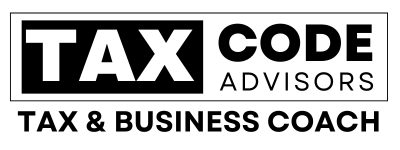You've been working tirelessly to grow your business. You've brought in revenue, worked long hours, and are constantly thinking of ways to make it all work. But let me ask you—does your business feel like it’s working for you? Or are you constantly scrambling, wondering where all the money went?
If it’s the latter, you’re not alone. A huge number of business owners fall into the same trap: money comes in, bills get paid, and whatever’s left? That’s yours, right? But then suddenly, the revenue dries up, or a tax bill arrives, and you find yourself in a panic, dipping into your personal savings to keep things afloat.
Sound familiar?
But what if I told you your business could be more than just a source of stress and financial uncertainty? What if it could operate like a well-oiled machine, with every dollar working for you like a diligent employee?
Think of Your Business In Terms of Cash Flow
Managing your business finances should feel like running your own little bank. Your business brings in deposits (revenue), and you strategically move those funds into various “buckets” based on specific needs. This method ensures you’re prepared for anything—slow sales months, taxes, or reinvesting back into the business.
This system is simple, but it can transform the way your business operates.
Step One: The Operating Bucket
Let’s start with the basics. Your Operating Bucket is where all your revenue lands. For many business owners, this is the only bucket they use—and that’s where things can go wrong.
When you lump everything—revenue, expenses, profit—into one bucket, it’s too easy to spend without realizing where the money is going. Suddenly, a major expense comes up, or taxes are due, and the cash just isn’t there.
Have you ever been hit with an unexpected bill and thought, “Where did all my money go?” That’s why we’re going to take things a step further.
Step Two: The Reserves Bucket
The first “bucket” you need is your Reserves Bucket—your safety net for unpredictable moments. Think of it as a rainy-day fund for your business.
Why is this critical? Let’s say you have a fantastic month and bring in $20,000. The temptation is to pay yourself whatever’s left after expenses. But what happens in the inevitable slow months or when unexpected costs arise?
By sweeping a portion of every revenue dollar into a reserves bucket, you’re building up cash to weather those storms. Most experts recommend saving three to six months of operating expenses. This way, when sales are slow, you won’t need to dip into personal funds or worry about making payroll.
Step Three: The Tax Bucket
Ever been blindsided by a massive tax bill at the end of the year? You’re not alone. It’s common for business owners to forget to set aside money for taxes, only to find themselves scrambling when the bill arrives.
Here’s where the Tax Bucket comes in. By sweeping a percentage of your revenue into this bucket, you’ll have peace of mind knowing that when Uncle Sam comes knocking, you’ll be ready. No surprises, no stress.
Consult with your CPA to determine the right percentage to set aside based on your tax bracket, and rest easy knowing you’re covered.
Step Four: The Cost of Sales Bucket
If your business relies on affiliates, contractors, or partners, you’ll want to create a Cost of Sales Bucket. This bucket is key for managing payments that aren’t technically “yours.”
Let’s say you owe a percentage of each sale to a partner. It’s essential to pull that money aside immediately. Otherwise, you risk spending it accidentally and coming up short when it’s time to pay your partners. This keeps your business relationships solid and your partners happy.
Step Five: The Capital Bucket
You’ve got dreams to grow, right? Whether it’s investing in a new marketing strategy, upgrading your technology, or hiring additional staff, it all takes capital. That’s where the Capital Bucket comes in.
By regularly sweeping a portion of your profits into this bucket, you’ll build up funds specifically for reinvesting in your business. No need to go into debt or dip into personal savings to fuel growth—your business is funding its own future.
Step Six: The Profit Bucket
Last but certainly not least is your Profit Bucket. You work hard—don’t forget to pay yourself!
Many business owners forget this crucial step. They reinvest every cent back into the business and don’t see the personal financial reward of their efforts. By designating a profit bucket, you ensure that your business is working for you, not the other way around.
Every time you get paid, move a portion into this bucket. This is your reward for all the effort you’ve put in. After all, what’s the point of building a business if you’re not benefiting personally?
Ready to Make Your Business Work for You?
If you’ve ever found yourself wondering where all the money went, or stressing over unexpected expenses, now is the time to take control.
With a few simple steps, you can transform the way your business operates financially. Start by setting up these essential buckets and sweeping your revenue into the right ones. You’ll find peace of mind knowing you’re prepared for anything, and your business will run more smoothly than ever before.
Here’s a quick checklist to get started:
- Set up your Operating Bucket for all incoming revenue.
- Create a Reserves Bucket with 3-6 months of operating expenses.
- Open a Tax Bucket so Uncle Sam doesn’t surprise you.
- Establish a Cost of Sales Bucket to manage payments to affiliates.
- Build a Capital Bucket for future growth and investment.
- Don’t forget a Profit Bucket to pay yourself for all your hard work!
Make today the day you start running your business like a bank—strategically, smoothly, and with a lot less stress.

